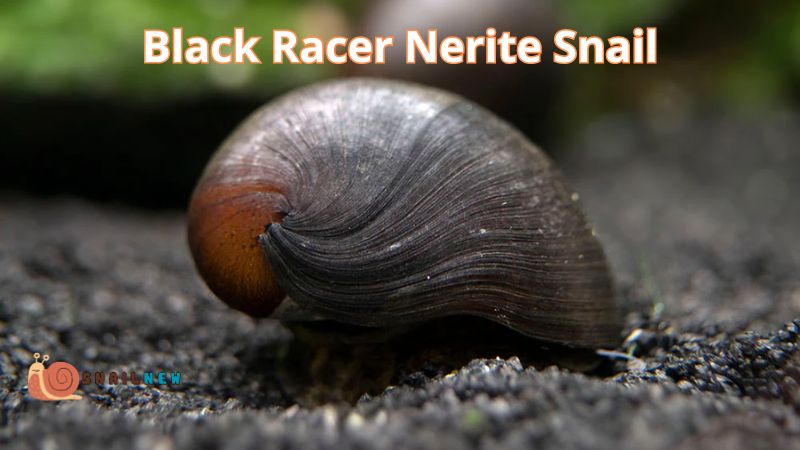Nerite snails are fascinating creatures that captivate aquarists and marine enthusiasts alike with their intricate shells and beneficial presence in aquatic ecosystems. Among the plethora of aquatic snail species, the various types of nerite snails stand out for their unique characteristics and diverse habitats. In this comprehensive guide, Snailnew will delve into the world of nerite snails, exploring different types of nerite snails, distinctive features, and contributions to aquatic environments.
Table of Contents
ToggleDiverse Types of Nerite Snails
1. Zebra Nerite Snail:
Within the distinguished roster of nerite snails, the Zebra Nerite Snail (Neritina natalensis) stands out as a symbol of grace, adorned with captivating black and yellow stripes reminiscent of the iconic patterns adorning zebras. Revered by aquarists for their visually stunning appearance, Zebra Nerite Snails play a vital role in freshwater aquariums. Their remarkable propensity for algae consumption contributes significantly to the preservation of water clarity and ecological equilibrium within these artificial habitats. Beyond their aesthetic appeal, the presence of Zebra Nerite Snails serves as a poignant reminder of the indispensable role played by biological diversity in fostering and sustaining the health and vitality of aquatic ecosystems.

2. Tiger Nerite Snail:
In the realm of aquatic fauna, the Tiger Nerite Snail (Neritina turrita) commands attention with its mesmerizing patterns resembling the majestic stripes of a tiger. Adorned with irregular patterns that exude a sense of wild allure, these snails captivate the imagination of marine enthusiasts. Beyond their aesthetic appeal, Tiger Nerite Snails play a pivotal role in freshwater ecosystems, where their voracious appetite for algae helps mitigate excessive growth and promotes water quality. Their dual role as both decorative elements and ecological stewards highlights the symbiotic relationship between aesthetics and functionality in aquatic environments.
3. Olive Nerite Snail:
Turning our gaze to understated elegance, the Olive Nerite Snail (Nerita olivinea) embodies grace with its smooth olive-green shell, a testament to nature’s subtle beauty. Thriving primarily in intertidal zones, these snails epitomize adaptability, showcasing resilience in the face of fluctuating environmental conditions. Despite their unassuming appearance, Olive Nerite Snails play a crucial role in nutrient cycling and algae control, contributing to the health and balance of coastal ecosystems. Their understated charm serves as a reminder of the invaluable contributions of seemingly modest organisms to the broader tapestry of biodiversity.
4. Horned Nerite Snail:
Delving into the realm of uniqueness, we are introduced to the captivating Horned Nerite Snail (Clithon corona), distinguished by the presence of small “horns” or spikes protruding from its shell. These intriguing appendages add a touch of fascination to freshwater aquariums, captivating observers with their unconventional and distinctive appearance. However, beyond their aesthetic appeal, Horned Nerite Snails play a pivotal ecological role by actively consuming algae and organic matter, thereby contributing to the maintenance of water clarity and overall ecosystem health within aquatic environments. Their presence not only enhances the visual allure of aquarium landscapes but also serves as a poignant reminder of the intrinsic value of embracing diversity and appreciating the inherent beauty found within nature’s myriad creations.

5. Red Racer Nerite Snail:
Adding a vibrant burst of color to aquatic environments, the Red Racer Nerite Snail (Vittina waigiensis) mesmerizes with its striking reddish-brown shell embellished by bold black stripes. Flourishing predominantly in brackish water habitats, these snails exemplify resilience, effortlessly acclimating to fluctuating salinity levels. Beyond their visual allure, Red Racer Nerite Snails play a pivotal role in algae management endeavors, actively contributing to the ecological equilibrium of their surroundings. Their dynamic presence not only enhances the aesthetic appeal of aquatic landscapes but also serves as a poignant reminder of the kaleidoscopic diversity and adaptability inherent in life within aquatic ecosystems.
6. Black Racer Nerite Snail:
The Black Racer Nerite Snail (Theodoxus fluviatilis), constituting an integral part of the nerite snail genus, boasts a striking appearance defined by its sleek black shell adorned with a lustrous sheen. Inhabiting freshwater ecosystems, these snails exemplify adaptability, flourishing across a spectrum of aquatic habitats. Renowned for their proficiency in consuming algae and organic detritus, Black Racer Nerite Snails assume a pivotal role in upholding water quality and ecological equilibrium. Beyond their functional role, their unassuming yet elegant presence serves as a poignant reminder of the intrinsic worth of every species in fostering the vitality and resilience of aquatic ecosystems.

Final Words
In conclusion, the diverse types of nerite snails stand as testaments to the beauty and complexity of aquatic life. From the bold patterns of Zebra and Tiger Nerite Snails to the understated elegance of Olive Nerite Snails, each species contributes to the richness and functionality of aquatic ecosystems in its unique way. Whether adorning freshwater aquariums or thriving in natural habitats, nerite snails embody the essence of biodiversity and underscore the interconnectedness of all life forms in sustaining the health of our planet’s waterways. As stewards of the environment, let us cherish and protect these remarkable creatures, ensuring their continued existence for generations to come.
Related Posts:
- Exploring the Diverse Types of Sea Snails: A…
- What Do Sea Snails Eat? Exploring the Culinary…
- Exploring the Lifespan of Snails: How Long Do Snails Live?
- Exploring the Diverse Types of Garden Snails: A…
- What Color Are Snails? Exploring the Colorful World…
- Exploring the Benefits of Malaysian Trumpet Snails…


